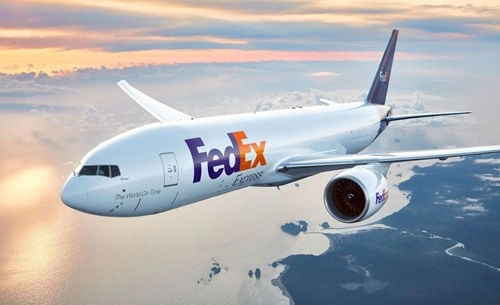When it comes to logistics, express shipping, freight, ground parcel delivery, and supply-chain services, FedEx Corporation is undoubtedly a global leader. The service began in 1971 by Frederick W. Smith with the idea of fast and overnight deliveries in the U.S. Since then, FedEx has expanded to more than 220 countries and territories with a reputation for fast delivery services.
FedEx daily handles millions of shipments, and its business model is mainly dependent upon a large network of air, ground, and freight transports. All this become possible through reliable Logistics and business services. Due to the high demand, FedEx has invested heavily in Hubs, planes, trucks, technology, and tracking to have complete control over each step.
Here, we will discuss FedEx, its business model, its revenue, and other key aspects related to revenue streams. Let’s get started.

How is the FedEx Business Model Structured?
FedEx’s business model is structured in multiple layers where they own multiple business segments and each model focus on certain mode of transportation and logistics services. There are three key segments which are FedEx express, FedEx Ground, and FedEx freight. There are multiple other businesses as well, like Logistics, custom brokerage, supply-chain consulting, office services, and much more.
Each of the segment serve a different customer need and purpose to parent business. Express focuses on fast, time-definite air shipments (overnight, two-day, etc.), while Ground delivers parcels more economically via surface transport. Freight handles large and heavy shipments (less than truckload, etc.). The business services segment offers support services, technology platforms, logistics solutions, and helps large or corporate clients manage complex supply chains.
| Company/Brand | FedEx Corporation |
| Establishment Year | 1971 |
| Headquarters | Memphis, Tennessee, USA |
| Founder/Owner | Frederick W. Smith (founder); current leadership under CEO Raj Subramaniam, etc |
| Industry | Logistics, transportation, express, ground delivery, freight, supply-chain services |
| Net Worth (2025) | Market capitalization approximately US$53.7 billion as of mid/late 2025 |
| Total Revenue 2025 | US$87.9 billion |
How Does FedEx Make Money?
FedEx logistics services play a crucial role in managing the whole segment and draw revenue from different business units, price models, and services. Multiple money-making points in the whole business help keep the business profitable. Below are five major revenue sources of FedEx.
1. FedEx Express
FedEx’s most premium service, which offers a better margin to businesses, is FedEx Express. It handles deliveries that arrive quickly, usually within one or two days. Due to having brand reputation in handling deliveries properly and in time with reliability, customers are ready to pay extra for the speediness. Express shipping uses air transport, large aircraft, global hubs, and many sorting and handling steps. This service alone helps in building brand value and generating a huge revenue.
2. FedEx Ground
FedEx Ground is a popular service that deals in less urgent deliveries, and these deliveries are made through trucks and ground networks. As you can see, this service is slower than express, but it helps FedEx make money by using low-cost transportation methods through its strong network. At the same time, customers get affordable pricing in exchange for slower deliveries. FedEx takes a lower margin but can deliver a higher number of packages, which end up making a huge revenue source.
3. FedEx Freight
Clients who want to ship big, heavy, or bulky items can use the FedEx freight service, which comes in handy. Less-than-truckload (LTL) or other freight services carry large shipments. These services often involve contracts with businesses for regular, large-volume shipping. Freight tends to have a lower frequency than express or ground.
4. Business Services
Apart from deliveries, FedEx also offers value-added services, which include supply chain consulting, customs brokerage, warehouse, fulfillment services, e-commerce support, and much more. Through this service, FedEx can cater to corporate clients, add margins, and diversify revenue sources. When the shipping services face competition or have less load, then these business services work as a buffer to the company.
5. Pricing, Surcharges, and Premium Features
FedEx charges based on various aspects like weight, distance, and speed. FedEx has always offered a Guarantee of delivery time, and they can charge more based on these factors. FedEx also earns through international fees, customs, fuel surcharges, remote area fees, handling of special items, and much more. These are some extras that add up in FedEx’s revenues.
Financial Performance
FedEx is doing great financially and generating heavy revenue through its multiple stream sources. In the FY25, FedEx reported total revenue of about US $ 87.9 billion, and the company’s operating income (GAAP) was approximately US $5.22 billion. The net income was between US $4.09 billion.
What’s New in 2025
FedEx has emphasized cost reduction heavily. Its “DRIVE” program has delivered structural cost savings, and the company reported many efficiency improvements. International trade pressures, especially tariffs and the end of “de minimis” exemptions from certain countries, have impacted export shipping volume. While express demand internationally has dropped somewhat, FedEx is leaning more on U.S. domestic shipping and growth in Europe and Southeast Asia.



